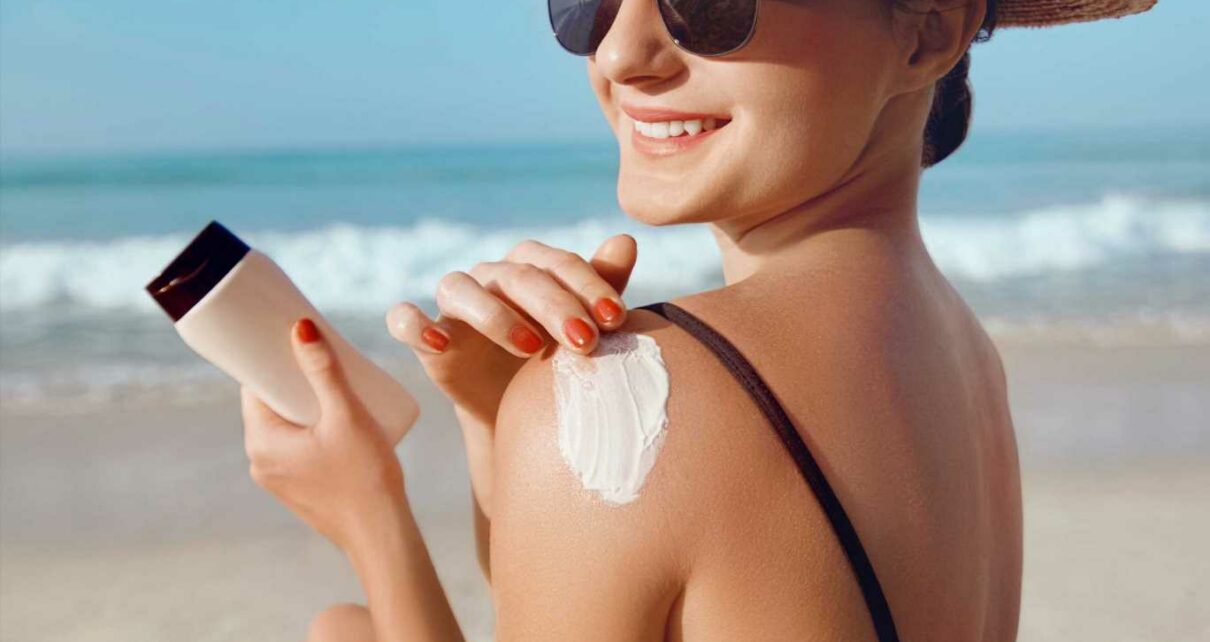SUN CREAM is essential for preventing painful sunburn and killer skin cancer.
If you’re already applying it, you’re already doing something right.
But it could all be pointless if you aren't doing it correctly.
We all know someone who says they 'don't burn' or their burn 'always turns into tan'.
But truth be told, there is no amount of safe sun exposure and tanning is never risk-free.
Read more on sun cream
21 Best sun creams UK 2023: Once-a-day, factor 50, and sensitive skin sunscreens
Cheap supermarket own-brand sun cream comes top as big brand fails safety test
The more times you burn or tan, the higher your risk of wrinkles, premature ageing and worse: skin cancer.
Skin cancer is becoming increasingly common in the UK, as experts fear Brits don’t take their skin health seriously.
Over the last decade, melanoma skin cancer incidence rates have increased by around a third (32 per cent) in the UK, according to Cancer Research.
Melanoma, the most serious skin cancer and is diagnosed 16,000 times a year.
Most read in Health
Warning as ‘silent’ but deadly disease on the rise – the 3 signs you must know
Shocking photos show woman 'unconscious' after being forced to puff on vape
Gas hobs emit more cancer-linked chemicals than second-hand smoke, study finds
Urgent warning as kid's toys can contain chemicals 300 times legal limit
The disease, which develops on skin that gets too much sun, takes the lives of 2,340 people per year.
Thankfully Dr Deborah Lee of the Dr Fox Pharmacy teamed up with Cult Beauty to share some top tips on how to apply sun screen the right way so to lower your risk of the dreaded illness.
1. Shake the sunscreen bottle
Make sure you shake up your sunscreen bottle before you do anything.
This "will help break up any clumping that occurs over time" and ensure you’re getting the best protection possible, and not dried up bits, Dr Deborah said.
2. Use the 15 minute rule
People often leave it until when they are at the beach or in the garden to put sun cream on.
But this is the wrong way to go about it.
If you are heading out to have fun in the sun, allow the formula to soak into your skin for at least 15 minutes before heading outside, she suggested.
Going out before 15 minutes means you skin isn't fully protected.
3. Make sure to use three fingers
The expert said you use the three-finger rule when applying it to the face.
"Gently tap the formula all over your face, ears, and neck rather than just rubbing it all on to avoid irritation and to ensure a smoother application," she explained.
4. Adopt the dot method
When applying to your body, you should try to smear small evenly sized dots over all areas exposed to the sun, the doctor advised.
After you've done this, gently massage the sunscreen in, until you can’t see it anymore.
5. Pick the right sun cream
Even if you're using all the right methods to apply lotion, none of this actually matters if you're not using a good cream to begin with.
The British Association of Dermatologists (BAD) advises the use of sunscreen with at least SPF 30.
They also suggested you make sure your sun cream has a UVA rating of at least four out of five star – which indicates how good the protection really is.
"If you have fair skin or burn easily you should use sun cream with an SPF 50 factor," the doctor added.
"For swimming, choose a water-resistant option."
How much sun cream should I use?
So as it turns out, many of us aren't lathering on enough of the white stuff.
In fact, a recent study found that 67 per cent of Brits don’t use enough sun cream, with 44 per cent using less than half of the recommended amount.
Read More On The Sun
My pal couldn’t afford rent so I transformed an old caravan for her to stay in
Asda shoppers reveal huge savings with £130 worth of items scanning for £30
BAD recommend using the following amount for each body part:
- Face and neck – two teaspoons
- Arms – two teaspoons, one teaspoon for each arm
- Legs – two teaspoons, one teaspoon for each leg
- Chest and stomach – two teaspoons
- Back and shoulders – two teaspoons
Source: Read Full Article











